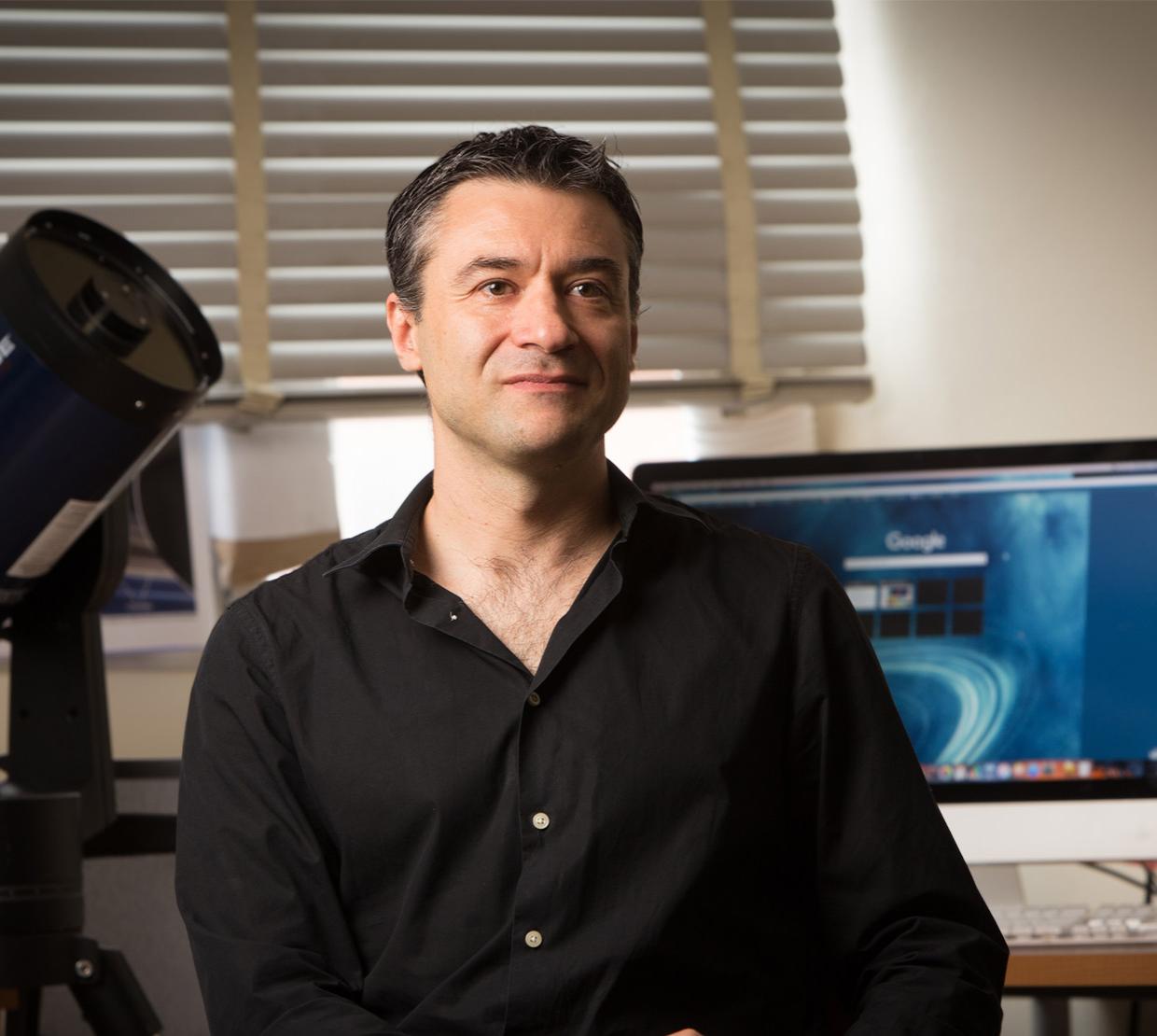An international research group confirmed College of Science predictions about exploding stars located at the center of galaxies.
Typical long duration gamma-ray bursts—energetic bursts of light created by cosmic explosions—flicker in terms of both light and temperature. They also rely on very massive stars merging and exploding.
Department of Physics head Davide Lazzati and his collaborators predicted that bursts located inside the accretion disc, a disk of gaseous matter surrounding a black hole, would behave differently because of the higher gas density.
The one-second flash from the gamma-ray burst would be stretched out, but it would have different characteristics than other long bursts, including how the light appears.
“So instead of having a one minute kind of disco ball, they go up and down,” he said. “It is this slow 10 seconds up and then 30 seconds down.”
The temperature of the burst would also consistently go from hot to cold instead of flickering.
The group published their predictions in September 2022, and less than a year later a paper from the Netherlands featured a weird gamma-ray burst that had unique properties.
During a conference in Italy in the fall of 2022, Lazzati met Professor Andrew Levan of Radboud University.
“We are having coffee and I asked him, ‘So, have you happened to see any of those bursts that look long but don’t have the typical long burst characteristics?’ and he said ‘Oh yeah! We’ve seen one and we are writing a paper about it,’” Lazzati said.
Expecting them to say no, Lazzati was shocked. When the paper finally came out in June 2023, it confirmed the predictions he made a year earlier.
“This opens the opportunity to look for more of them because we know more about how to recognize these weird or unique bursts.”
In fact, Lazzati is working with an Oregon State undergraduate student whose honors thesis includes looking at data from gamma-ray bursts and seeing if they have unique behavior.
Knowing more about gravitational waves and gamma-ray bursts could contribute to understanding where the elements come from. Before the big bang, there was only hydrogen and helium. Now, there are 90 different elements and although researchers know some come from big stars, there is still debate on where the heavier elements are synthesized. Some believe they come from the same neutron star collisions that make the short gamma-ray bursts, but with only one confirmed case seen in 2017, the jury is still out.




